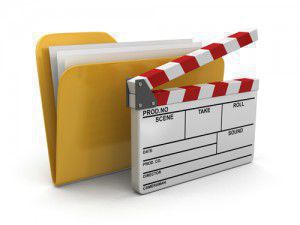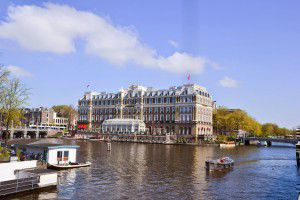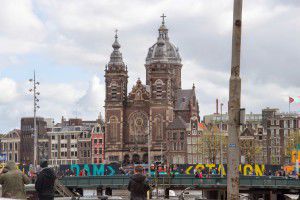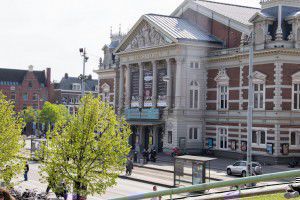Quote of the week: 10 May 2014
“It does not matter how slowly you go as long as you do not stop.” Confucius
For more like this, find us on Pinterest.
Embed This Image On Your Site (copy code below):
What’s so good about Eurovision?
This Saturday is the final of the Eurovision Song Contest 2014 in Denmark, with 125 million people expected to watch across Europe and beyond. The contest, now in its 59th year, has become known for its wacky performances and tends to divide opinion; while some people love it (although maybe not as much as this man), others claim to find it tacky. But I think most people can agree that whether you take it seriously or not, Eurovision is good fun. (Even if sometimes you need a drink or two to help you through it.) Here are our ten favourite things about Eurovision:
1. Russian Grannies
I had to put this first because it was one of my favourite ever Eurovision moments. The song on its own is fairly forgettable, but what made it amazing was the elderly ladies who managed to incorporate baking into their performance at the 2012 contest. I’m still not sure what it had to do with a Party for Everybody, but it was brilliant, and I’m still disappointed that it didn’t win.
2. Riverdance
The Irish dance act were first discovered when they performed during the interval of the Eurovision Song Contest in 1994. Known for its amazing synchronicity, energy and rhythm, Riverdance went on to become a worldwide phenomenon. So if you’re not a fan, now you know who to blame.
3. Romanian rivalries
In the UK, it’s not seen as very ‘cool’ to enjoy Eurovision, but some other countries take it incredibly seriously. In Romania, for example, it’s a really big deal and apparently it’s traditional for the acts to try and win a place by discrediting their opponents.
4. The voting
How could I not mention the political voting? Half the fun of Eurovision is predicting who’s going to give points to who. Greece and Cyprus usually vote for each other, as do the Scandinavian countries and the Balkans. If that sort of thing interests you, this is a useful summary. Unfortunately, the political voting tends to leave the UK in a precarious position; we often get votes from Ireland, and sometimes Malta, but not very often from anyone else…
5. The UK
While we’re on the subject, let’s take a look at the UK’s Eurovision record. It’s hard to believe looking at recent history, but apparently it’s one of the most successful countries, winning five times since our first appearance in 1957. The last win was in 1997, with Katrina and the Waves, and since then we’ve not been doing so well, finishing last three times. The first of these was in 2003, when we scored an embarrassing ‘nul points’. Apparently this year’s entry, Children of the Universe, by singer-songwriter Molly, is expected to do well. I’ll believe it when I see it.
6. ABBA
It’s not often that a Eurovision act goes on to have a successful long term career, but one exception is Swedish group ABBA. Not only did they win the contest for Sweden in 1974, they went on to sell over 380 million albums worldwide. Their music also featured in the hit film Muriel’s Wedding and the award-winning musical, Mamma Mia! (And the movie version, which introduced the world to the singing ‘talents’ of Pierce Brosnan.)
7. Alcohol is Free
Regardless of your views on drinking, it’s hard not to tap your foot along to Alcohol is Free, by Koza Mostra and Agathonas Iakovidis, a.k.a. the Greek answer to Madness. They finished sixth in 2013.
8. Finland
We love Finland; they always come up with something memorable. Last year was the catchy Marry Me, which ended with that kiss, but nothing beats 2006 entry Hard Rock Hallelujah, by Lordi. Eurovision isn’t known for its heavy metal, preferring to stick to happy songs about how we should all love each other. But the alternative approach seemed to do the trick; the band won that year’s contest.
Warning: this video contains flashing lights and monster masks!
9. Language rules
Eurovision used to have a very strict rule about countries only singing in their native language, which has been lifted and restored a few times over the years. These days, many of the competing countries choose to perform in English, but some remain loyal to their own language; France and Spain are two examples. When I was growing up, there were more songs in other languages than there are today, and we used to enjoy turning on the subtitles and watching them struggle to translate the lyrics. Songs in English have won 28 times, followed by French, with 14 wins.
10. Fairytale
This was a popular choice in the EuroTalk office. Every now and again, Eurovision does actually produce a good song, and Fairytale was the one that we all thought of. The Norwegian entry for 2009 featured violinist Alexander Rybak, and won with a record-breaking 387 points out of a possible 492. For some reason, Alexander and his dancers were also a bit of a hit with the ladies…
Have we left out your favourite thing about Eurovision? Let us know in the comments!
Liz
Quote of the week: 3 May 2014
“Believe you can and you’re halfway there.” Theodore Roosevelt
For more like this, find us on Pinterest.
Embed This Image On Your Site (copy code below):
The true meaning of character names from fiction
The other day, I was watching one of my favourite films, The Lion King (yes, I know it’s a kids’ film but I love it) and I was reminded of a fun fact I read recently, that many of the characters’ names are taken from Swahili. Simba means ‘lion’, Rafiki means ‘friend’, ‘Nala’ means ‘gift’ and Pumbaa means ‘simpleton’. Poor Pumbaa.
So often when we watch a film or read a book, we take for granted that the characters are just called whatever they’re called, without considering why. So here are a few more examples – some of which may be surprising, but all of which I hope will be interesting.
Disney
The Lion King isn’t the only Disney film to give its characters significant names. In Beauty and the Beast, perhaps most obviously, the heroine’s name, Belle, means ‘beautiful’ in French. But many of the other characters resemble their names somehow, like Mrs Potts (the teapot), Cogsworth (the clock) and everyone’s favourite candelabra, Lumière, which means ‘light’.
In Sleeping Beauty, the name of the villain Maleficent comes from the Latin ‘maleficus’, meaning ‘wicked, prone to evil’. Seems appropriate. And on a similar theme, Cruella DeVille from 101 Dalmatians is pretty self-explanatory.
The Jungle Book
I think Rudyard Kipling would object to me listing this under Disney, although that might be where many people know The Jungle Book from. Shere Khan translates roughly as ‘Tiger King‘ (‘shir’ is ‘tiger’ – or ‘lion’ – in Persian, Punjabi and Hindi, while ‘khan’ is ‘king’ in many languages). ‘Bhalu’ (Baloo) means ‘bear’ in Hindi, and the ‘bagh’ in ‘Bagheera’ means ‘tiger’ – which is slightly confusing since Bagheera’s a panther.
Lord of the Rings
In J.R.R. Tolkien’s trilogy, the character Frodo Baggins gets his first name from the Old English word ‘fród‘, which means ‘wise by experience’.
Game of Thrones
The character names in George R.R. Martin’s books, and the accompanying TV series, for the most part seem to be modern names with a slight twist (Robb, Jaime, Eddard), but there is one character whose name has a deeper meaning – Bran Stark, whose first name is Irish for ‘raven‘. Fans of the series will know about the three-eyed raven, who plays a significant role in Bran’s story from the start.
Star Trek
I’m not much of a Star Trek fan myself, but I have it on good authority that Nyota Uhura’s name means ‘Star Freedom’ in Swahili.
Harry Potter
Many of the characters in J.K. Rowling’s best-selling series have names that mean something, most often in French or Latin. Voldemort (I’m not scared to say it!) means ‘flight from death’, which is very appropriate for a character whose main goal is immortality.
Meanwhile, the Malfoys’ surname means ‘bad faith’ in French, and perhaps the best known, because his name is a spoiler in itself – Remus Lupin, whose surname comes from ‘lupus’, which is Latin for ‘wolf’. His first name is also a reference to the story of Romulus and Remus, who were raised by wolves.
Star Wars
Speaking of spoilers – according to George Lucas, ‘Darth’ is a variation of ‘dark’ and ‘Vader’ is Dutch for ‘father’. So I guess the Dutch probably saw the big twist coming a mile off.
The Hunger Games
We’re told that Katniss Everdeen, the main character in Suzanne Collins’ books, was named for a plant, but there’s a bit more to it than that. The katniss plant is also known as ‘arrowhead’ and comes from the genus Sagittaria. Sagittarius – the archer. Katniss is pretty good with a bow and arrow. See how we got there?
So next time you’re enjoying your favourite movie or book, have a think about the character names, because they may have been the result of hours of debate!
Has anyone got any more examples?
Liz
10 reasons to visit… Amsterdam
As part of our non-stop quest to bring you an insiders’ guide to the cultural and linguistic highlights of Europe and beyond, here are my top ten reasons why you should visit Amsterdam.
1. The beautiful canals
Of course I knew that Amsterdam was famous for its canals, but I didn’t realise that they’re everywhere. This can make getting around a little confusing as everything sort of looks the same (especially if you indulge in some of Amsterdam’s other famous pastimes – see later!) but it gives the city a unique and beautiful atmosphere, and means you’re never short of somewhere relaxing to sit and enjoy a rest and a beer. Nat suggests renting a pedalo, or you can also take a cruise around the canals for about 15 euro.
2. The Red Light District
This is one of Amsterdam’s most famous and most unique tourist sites. Whatever your opinion is on women being displayed for sale in windows, it’s something you won’t see anywhere else, and the district is definitely worth a peek. Just remember – pictures are strictly forbidden, and your camera will be confiscated if you don’t keep it stowed away.
3. The coffeeshops
If you don’t know what Amsterdam’s coffeeshops are known for, then let me give you a hint… it’s not coffee! Since marijuana is legal in Holland, many tourists flock to Amsterdam to smoke a joint or two in one of the city’s many coffeeshops. These are literally everywhere, especially in the city centre and near to the Red Light District, and are always packed with people sitting outside and enjoying a smoke. You’ll probably notice the distinctive smell everywhere. By the way, there are also plenty of great places to drink actual coffee as well!
4. Dam square
There are a couple of main squares in Amsterdam, which are all packed with cafes, restaurants and bars, but Dam is the biggest and most iconic. During our trip there was a funfair going on there, and it’s definitely one of the more lively parts of the city, packed with people. By night, all the restaurants and bars around this area are busy, and sitting outside is a great way to people-watch and experience the Amsterdam nightlife. Be sure to also check out Rembrandtplein – where you can easily grab a table outside to eat dinner or have a drink, and Museumplein, where all the biggest museums (and the famous Amsterdam sign) are.
5. Dutch cuisine?!
If you’re anything like me, then you probably don’t instantly associate the Netherlands with great cuisine, but actually you’d be wrong! Amsterdam has plenty of good international restaurants, but is particularly good for Indonesian cuisine due to the country’s links with its former colony. We also found a fantastic Dutch restaurant in the centre, where I tried the traditional dish Hotchpotch, which is basically a combination of mashed potato and vegetables, served with bacon or meatballs, which was really tasty and filling. Make sure you also order a pint of Heineken (brewed in the city) and try some traditional apple cake or poffertjes (small pancakes), which are really popular.
6. Haring (herrings)
Technically this should probably come under ‘Dutch cuisine’, but I think it deserves a point all of its own. Herring is a very traditional food in the Netherlands, as in much of Northern Europe and can be bought from various stalls in the city. Try it with pickles and chopped onion in a roll for a tasty, cheap and portable lunch while you’re sightseeing!
7. Try out a few phrases in Dutch!
The stereotype that Dutch people are ridiculously good at English is true, so don’t worry if you don’t speak any Dutch; you can definitely get around and order food in English. However, people are generally friendly and happy to let you try out a couple of phrases on them. We got chatting to some locals in a club, and they were happy to teach us some basic words, although their English was completely fluent. Dutch people seem to be very open to chatting with foreigners in English (more so than elsewhere) and it’s an easy place to make some new friends.
Don’t forget to bring uTalk with you, even if you only use it to decipher what’s on menus!
8. The museums
There’s plenty to check out on the cultural side too. The Van Gogh museum has permanent queues in front of it, to see some beautiful paintings by the most famous Dutch artist of all time – even if he wasn’t well known at all in his lifetime. We visited the Rijksmuseum nearby, which has some paintings by Van Gogh and fellow Dutch artist Rembrandt, as well as many other exhibits. However make sure you leave plenty of time to see everything – as it’s huge and takes at least 3-4 hours to explore everything. Michal recommends the children’s science museum, and the Museum of Sex also sounds intriguing…
9. Parks
Well, this one is rather weather-dependent, but the weather was great over the Easter weekend, and a stroll around one of the parks was definitely in order. The Vondelpark is quite central and really big – great for a run or a walk. We also sunbathed for a few hours in the Osterpark (a bit further out) where you can easily while away a sunny afternoon.
10. Bikes, bikes, bikes!
Finally, the other big thing the city is famous for: bikes. The first thing everyone said to me before I went to Amsterdam was ‘watch out for the bikes’ and they weren’t wrong. It seems like absolutely everyone cycles everywhere, which means it’s a very clean city and the air quality is good. It’s also a very healthy way to get around. Renting a bike is an ideal way to see the city. You can walk just about anywhere, or there are trams and even a (small) metro network, but cycling is probably the quickest and easiest way to zip around the main sights and get from one side of the city to the other. Even cycling home from a night out seems to be the norm.
So there you have it… Everyone in the office seems to have a lot of opinions on what the best things to see and do are, so let us know what we’ve missed in the comments!
Alex (and team!)





